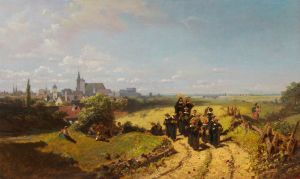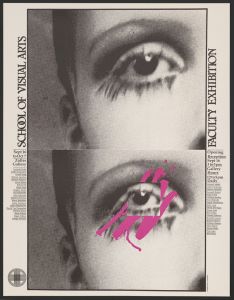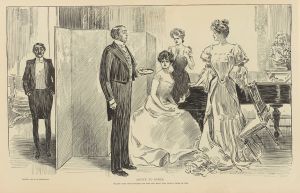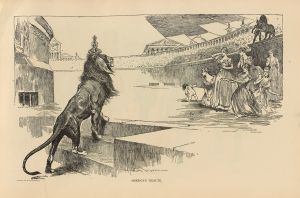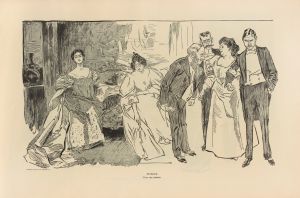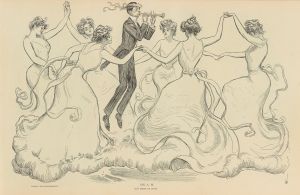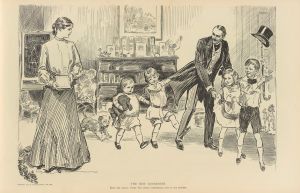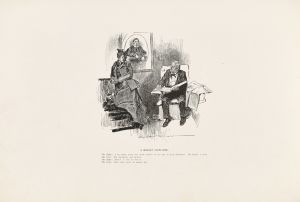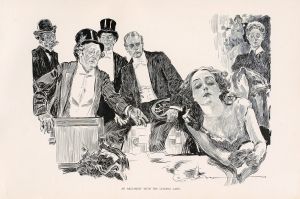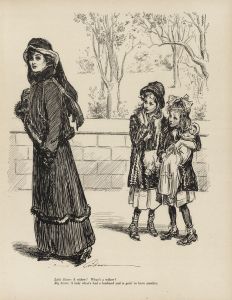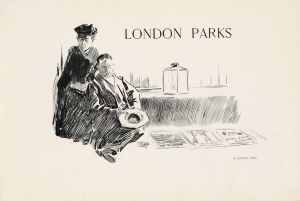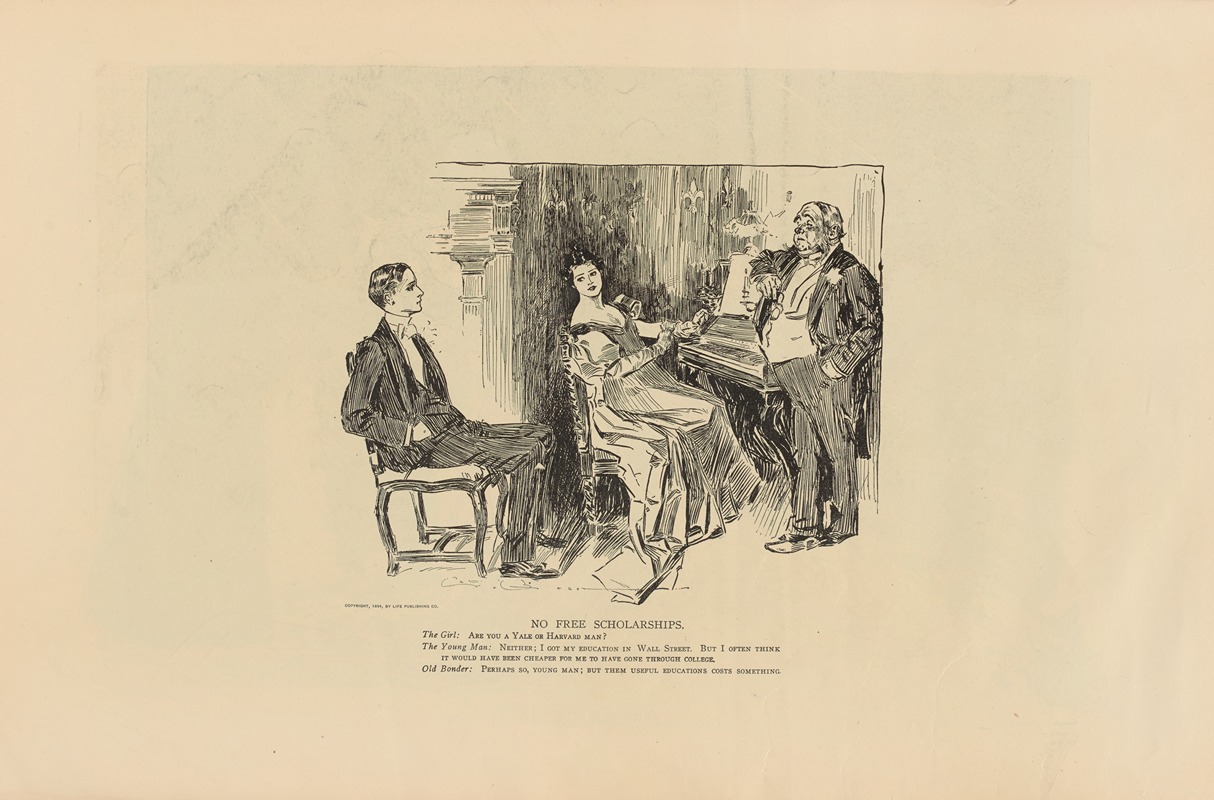
No free scholarships
A hand-painted replica of Charles Dana Gibson’s masterpiece No free scholarships, meticulously crafted by professional artists to capture the true essence of the original. Each piece is created with museum-quality canvas and rare mineral pigments, carefully painted by experienced artists with delicate brushstrokes and rich, layered colors to perfectly recreate the texture of the original artwork. Unlike machine-printed reproductions, this hand-painted version brings the painting to life, infused with the artist’s emotions and skill in every stroke. Whether for personal collection or home decoration, it instantly elevates the artistic atmosphere of any space.
Charles Dana Gibson was a prominent American illustrator best known for his creation of the "Gibson Girl," an iconic representation of the independent and fashionable American woman at the turn of the 20th century. His work was widely published in magazines such as Life, Harper's Weekly, and Scribner's, and he became one of the most celebrated illustrators of his time.
The illustration "No free scholarships" by Charles Dana Gibson is one of his many works that reflect the social and cultural attitudes of his era. Gibson's illustrations often contained a satirical edge, commenting on the societal norms and expectations of men and women during the late 19th and early 20th centuries. His work frequently explored themes of gender roles, class distinctions, and the evolving nature of American society.
"No free scholarships" is believed to be part of Gibson's broader commentary on education and social mobility. During the time Gibson was active, education was becoming increasingly important for social advancement, but access to education was often limited by socioeconomic status. The title "No free scholarships" suggests a critique of the barriers that prevented equal access to educational opportunities, a theme that resonates with the broader social issues of the time.
Gibson's style is characterized by its detailed pen-and-ink drawings, which capture the nuances of expression and posture. His illustrations often feature elegantly dressed men and women, reflecting the fashion and social norms of the upper classes. The "Gibson Girl" in particular became a symbol of the modern, independent woman, and Gibson's work played a significant role in shaping public perceptions of gender roles.
While specific details about the illustration "No free scholarships" are limited, it is consistent with Gibson's body of work in its exploration of societal themes through a humorous and critical lens. His illustrations were not just artistic expressions but also social commentaries that engaged with the issues of his time.
Gibson's influence extended beyond his illustrations; he was a key figure in the development of American illustration as a respected art form. His work paved the way for future generations of illustrators and contributed to the visual culture of the early 20th century. Today, Gibson's illustrations are appreciated not only for their artistic merit but also for their insight into the social dynamics of his era.
In summary, "No free scholarships" by Charles Dana Gibson is an illustration that reflects the artist's engagement with social issues, particularly those related to education and class. While specific information about this particular work is scarce, it fits within Gibson's broader oeuvre of socially conscious and artistically influential illustrations.






